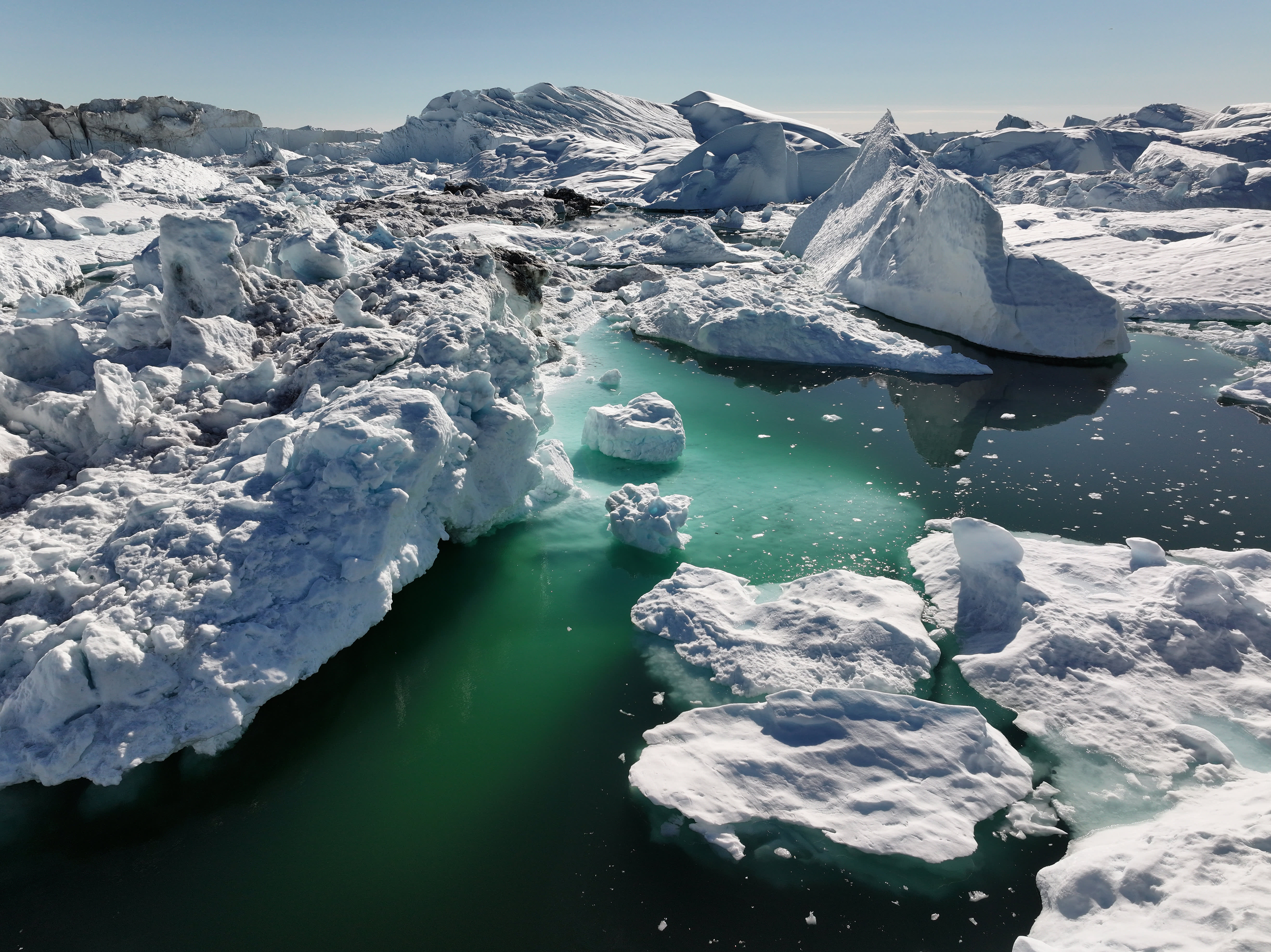
Major ice loss from Greenland is exposing the island’s natural resources, inadvertently making some of the world’s largest untapped critical mineral reserves more accessible.
Greenland, a vast but sparsely populated island situated between the Arctic and North Atlantic Oceans, has been transformed by the climate crisis in recent decades.
A major analysis of historic satellite images, published last year by researchers at the U.K.’s University of Leeds, showed that the autonomous Danish territory is turning increasingly green due to human-caused global warming.
The changing environment has seen parts of Greenland’s ice sheet and glaciers replaced by wetlands, areas of shrub and barren rock.
Scientists have repeatedly sounded the alarm over the melting snow and ice on the island, warning the loss of ice mass risks increased greenhouse gas emissions and rising sea levels.
For mining companies, Greenland’s ice retreat could facilitate the start of a mineral “gold rush.”
“What’s happening now is interesting because the waters around Greenland are opening up earlier and earlier each year and closing down later and later each year. And the ability to get into these far-flung places is a lot easier than it was 20, 30, 40 or 70 years ago,” Roderick McIllree, executive director of U.K.-based mining company 80 Mile, told CNBC via video call.
“Now, the ice probably only really forms for three or four months in the very northern latitudes and the rest of the country is seeing receding ice caps that is exposing rocks and potential mineral deposits that haven’t been seen before,” he added.
80 Mile currently has three projects it is actively developing in Greenland, including a large oil concession on the island’s east coast, a titanium project near the U.S. Pituffik Space Base in the northwest and its Disko-Nuussuaq project in the southwest.
Underlining the island’s strategic potential as a globally significant mining hub, McIllree said the firm’s Disko project could be one of the largest occurrences of nickel and copper on the planet.
A geopolitical storm
Tony Sage, CEO of Critical Metals Corporation, which is developing one of the world’s largest rare earth assets in Greenland, said ice melt on the island had done the mining company “enormous favors” from a logistical standpoint.
Sage said the company had been able to bring in large ships directly from the North Atlantic “right up to the edge of our ore body” at Tanbreez in southern Greenland, adding that the creation of fjords 80 meters deep meant the team had been able to make use of a floating dock rather than a port.
“You can imagine, it’s easier now to do these things. If you go into Russia, for example, in Siberia, it’s under a lot of permafrost and ice and they still manage to mine a lot of minerals, as well as oil and gas. So, yes, there will be a mini gold rush into Greenland,” Sage told CNBC via video call.
Alongside Greenland’s harsh climate, remote landscape and small population, Sage highlighted a lack of infrastructure as a barrier for mining companies to overcome.
“It’s just logistics. The Danes never built a railway [and] didn’t build any roads,” Sage said.
“Once you’re outside of these little towns and cities, there are no roads. So, if you want to go in between, for example, Qaqortoq, where we are, to Nuuk, you have to take a helicopter. So, that is the issue that you’ll have with a gold rush,” he added.
Read more
Greenland, which has long pitched itself as a Western alternative to China’s near monopoly on rare earth elements, has been thrust into the center of a geopolitical storm in recent weeks.
U.S. President-elect Donald Trump has repeatedly expressed his desire to gain control of the territory, describing the prospect as an “absolute necessity” for purposes related to national security.
Speaking at a news conference earlier in the month, Trump refused to rule out the possibility of using military force to make Greenland a part of U.S.
Greenland Prime Minister Mute Egede said Monday that the island is open to closer ties with U.S., particularly in areas such as mining. Egede has previously insisted Greenland is “not for sale” and called for the international community to respect the island’s aspirations for independence.
Early stages
Jakob Kløve Keiding, senior consultant at the Geological Survey of Denmark and Greenland (GEUS), said a 2023 survey of Greenland’s resource potential evaluated a total of 38 raw materials on the island, the vast majority of which have a relatively high or moderate potential.
These materials include the rare earth metals graphite, niobium, platinum group metals, molybdenum, tantalum and titanium. Greenland is also known to have significant lithium, hafnium, uranium and gold deposits.
Critical minerals refer to a subset of materials considered essential to the energy transition. The end-use of these materials, which tend to have a high risk of supply chain disruption, are wide-ranging and include electric vehicle batteries, energy storage technologies and national security applications.
“There is huge potential [in Greenland] but, at the moment, there is not actually much mining going on,” Keiding told CNBC via telephone.
“Greenland is what we would call a greenfield exploration area. So, [it is] in the early stages of exploration where, for many of the deposits, we don’t have that much data. But there are some large and well-established deposits with known resources.”
Keiding issued a note of caution when asked about the prospect of a mineral gold rush, saying that while Greenland’s retreating ice may remove some logistical hurdles, progress in terms of extraction will likely take “quite some time.”
Source: CNBC
